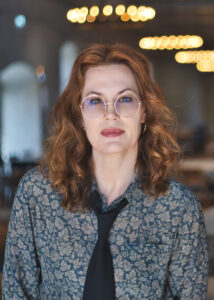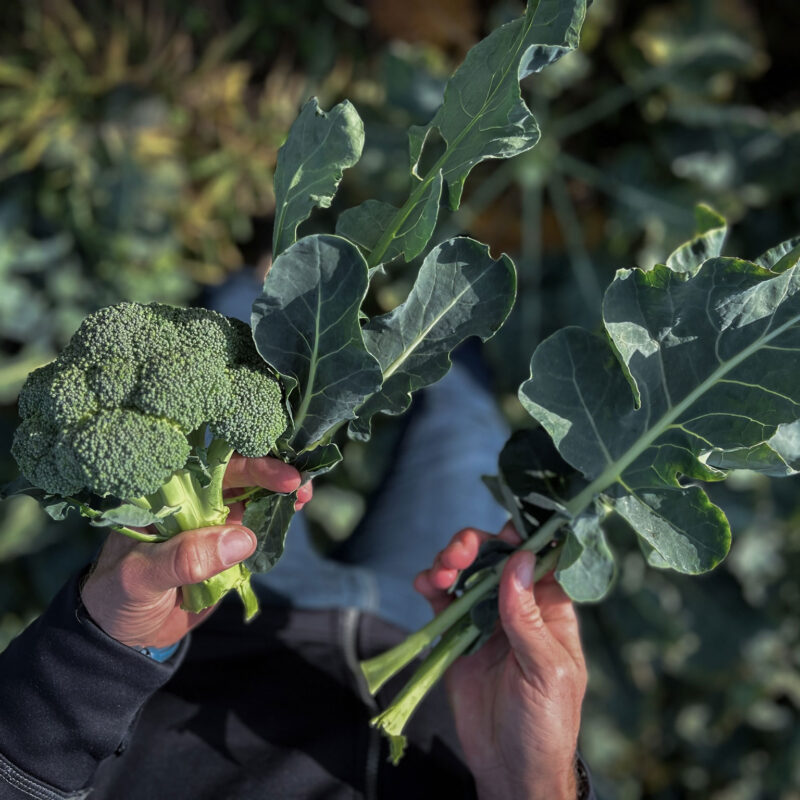The Feed of the Future for Fish, Pigs, Poultry and Laying hens
Axfoundation and the Swedish University of Agricultural Sciences (SLU) are bringing together researchers and practitioners from across Sweden to jointly tackle two of the greatest challenges of the food system: waste of resources and the environmental impact of feed. The project will test and evaluate several innovative feed ingredients, including for example insects, mycoprotein, and blue mussels from the Baltic Sea. The goal is to set up production with sales of pigs, fish, poultry, and eggs from laying hens that have been fed a low climate impact feed containing ingredients that benefit biodiversity. The project takes the results further from the pilot Five Tons of Green Fish which proved that it is possible to raise Swedish rainbow salmon with insect-based feed, which has up to 70% lower climate footprint than conventional feed.

In Sweden, feed represents as much as 50-85% of the climate emissions from fish, pigs, poultry, and eggs. Photo: Marie Liljeholm, SLU
The Issue
The food system accounts for about 1/3 of the global greenhouse gas emissions and is the biggest cause of loss of biodiversity. In turn, the production of food from animals has the greatest impact in the sector, and the feed is responsible for 50-85% of climate emissions from poultry, eggs, fish, and pigs. Furthermore, 80% of all agricultural land globally is used for feed – which often consists of food that humans could eat directly. This makes the feed one of the most important challenges to address. At the same time, the food system is facing major problems with food waste – in Sweden alone, 1,3 million tons of food is thrown away every year by food manufacturers, stores, restaurants, and households. These are resources that could be used much more efficiently.
For the climate, the environment, and public health, it is preferable that our food doesn’t eat our food. Furthermore, the residual flows that arise need to be used in a resource-efficient way.
– Madeleine Linins Mörner, Program Director Future Food, Axfoundation

Several innovative feed ingredients are being evaluated – including American black solider fly and mealworm fed on waste streams from the food industry. Photo: Roxen Communication
Our Solution
The project involves actors from throughout the entire food chain joining forces to help reduce the waste of resources in the food industry, as well as reduce the environmental and climate impact of feed. The goal is for Sweden to have a pilot production and sales of pigs, poultry, and eggs from laying hens that have been fed a feed that has a low climate impact and contains ingredients that benefit biodiversity. The long-term ambition is for this type of feed to be able to replace a large part of today’s conventional feed. The project builds on the lessons learned from Five Tons of Green Fish, which demonstrated that rainbow trout can be fed insect-based feed. In terms of fish, the ambition is therefore to take the step from pilot to larger scale with continuous production and sales.
New feed ingredients are evaluated: Insects, mycoprotein, mussels, and by-products from broad bean
Several innovative feed ingredients will be tested during the project by researchers at SLU for evaluation of nutrient composition, and nutrient digestibility for different animal species. Particularly interesting ingredients are the American black soldier fly and mealworm fed on the residual flow from the food industry, mycoprotein produced using residual flows from the forest industry, blue mussels from the Baltic Sea that are not suitable for human consumption, and by-products from the production of concentrate of the Swedish broad bean. These protein-based feed ingredients are expected to replace several components in conventional feed, such as soya and wild-caught fish, both of which have major negative effects on the climate and biodiversity.
Production and sale: Fish, pigs, poultry and eggs from laying hens
The ambition is to develop new feed mixes and use these on a pilot scale to feed laying hens, poultry, and pigs on Swedish farms. The production of fish is planned to go from pilot to scale. The meat and eggs from the pilot tests will undergo sensory evaluation by researchers at the School of Hospitality, Culinary Arts and Meal Science, Campus Grythyttan, and will be assessed from a gastronomical perspective by an expert panel including some of Sweden’s leading chefs. The aim is to sell the products to both restaurants and grocery stores.
Project Objectives
The ambition of the Feed of the Future project is to:
- Develop, test, and evaluate ingredients for feed that can be included in future feed for laying hens, poultry, pigs, and fish, and compose feed using these ingredients. The feed will be based on ingredients that have a low climate impact, a high degree of circularity, a positive effect on biodiversity, a low level of attractiveness for other consumption, and must not leach or add new nutrients into the Baltic Sea area.
- On a pilot scale, Swedish farmers will breed laying hens, poultry, and pigs fed with the feed of the future, which will include the evaluated ingredients for the feed.
- Products from laying hens, poultry, and pigs fed innovative feed will be sold on a trial basis to stores and via restaurants.
- Ensure the continuous production and sale of fish farmed with the feed of the future.
- Conduct business modeling and mapping of the financial viability and market potential of the feed.
- Compile and address legal or other types of barriers, in order to accelerate the transition to the use of sustainable and circular feed.
The project runs from 2023-2025. For 2023 and 2024, the focus was on the evaluation of ingredients for feed and testing nutrient digestibility. In 2025, feeding trials are planned for pigs, poultry, and laying hens, as well as the continuous production of fish. Gastronomic and sensory evaluation will be done at the end of the project period.
Our Work
Axfoundation is the project manager for the Feed of the Future, and SLU is the coordinator. The role of Axfoundation in the project is to bring together a broad group of actors, serve as a bridge between researchers and practitioners, and assist the various actors in the food chain in finding new, sustainable, and profitable business models.
Through the Axfoundation network that includes some of Sweden’s leading chefs, along with the School of Hospitality, Culinary Arts and Meal Science, Campus Grythyttan Örebro University, Axfoundation is responsible for the sensory and gastronomic testing of the finished products. This will be followed by a joint effort alongside actors within the food industry and food service, to then contextualize how these products can best reach the market.
Five Tons of Green Fish is Scaled Up
The project builds on the lessons learned from Five Tons of Green Fish, which demonstrated that it is possible to farm a sustainable and tasty fish – the Swedish rainbow trout – with the simultaneous use of an untapped raw material resource in the form of food waste from the industry.
Instead of imported soya and imported wild-caught fish, the rainbow trout were fed a fish feed consisting of ingredients produced almost exclusively in Sweden, and with low attractiveness for other consumption. One of the main ingredients in the feed was insects that ate shells, kernels, and bread scraps.
The fish feed was found to have a 70% lower climate footprint than a conventional feed, and 30% lower than the regular feed used in Norwegian salmon farming. At the same time, the rainbow trout also grew as well as, or better than, the reference fish.
In the Feed of the Future project the approach is scaled up to also include laying hens, poultry, and pigs. This increases the potential for a sustainable, circular, and insect-based feed industry.
Learn more about Five Tons of Green Fish
Partners
The project is run by Axfoundation and SLU, along with project partners including ATEA Sverige, Axfood, Boden Municipality, NovaPro, Ekobolaget, Ecoloop, Ecopelag, Fiskhallen Sorunda, Grönsakshallen Sorunda, Johannas Stadsodlingar, Kötthallen Sorunda, Lantmännen, Martin & Servera, Plant Protein Production, Ragn-Sells, School of Hospitality, Culinary Arts and Meal Science Örebro University on Campus Grythyttan, RISE, Stjärnägg, Varva, Svenska Foder, Viking Fågel, Älvdalslax. The project is partially financed by Sweden’s Innovation Agency Vinnova.

























































